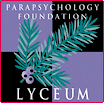 |
 |
| Click here for the PF Lyceum Site Index
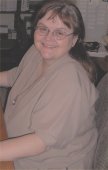
What Basic Literacy in the Field Can Do For You PF Lyceum Blog #8, February 23rd, 2006 Nancy L. Zingrone One of the factors that I believe complicates scientific progress in parapsychology is the lack of basic literacy in the field, that is, the low level of familiarity with our most important published works. In most disciplines, students obtain basic literacy through coursework taken either at the undergraduate or post-graduate level. But in parapsychology, coursework is pretty hard to find. When I first got interested in the field in the 1970s, for example, I was lucky enough to be near both a college and a university with accredited courses in parapsychology on the books. I actually finished my undergraduate degree with 15 credits in parapsychology by successfully completing an introductory course and a research seminar in parapsychology, and an independent study in research methodology in psychology in which I designed, conducted, evaluated, and wrote up a psi experiment. While I was an undergraduate, it was possible to include parapsychology in courses towards advanced degrees in psychology at City College in New York City, at some of the state universities in California, and at the University of Edinburgh. But for a variety of reasons, I wasn’t able to avail myself of those opportunities although I had an ambition, even then, to become a researcher in the field. The Summer Study Program (the SSP) of the Rhine Research Center (then the Institute for Parapsychology at the Foundation for Research on the Nature of Man) debuted in 1974, the same year I got my B.A. in psychology. At the time, I didn’t think I needed the SSP. I mean, I already had 15 credits of college parapsychology and I had taken my courses mainly with one terrific and enthusiastic instructor. Five years later, after I had completed an M.S.Ed. and was working as an Assistant Registrar at my Alma Mater, I took over a for-credit undergraduate course in parapsychology at another local university from that same instructor, then a friend and colleague. For three years thereafter, I alternated teaching two courses in parapsychology — the introductory survey course and the research methods seminar — with teaching two introductory courses in statistics. I also taught occasional adult education courses on parapsychology at a variety of venues including some community colleges and a museum of natural history. By the time I came to Durham, North Carolina, to take up a Research Fellowship at the Rhine in December of 1982, I thought I had a pretty solid grounding in the field. Hah! One of the conditions of my employment was that I attend the then-eight-week-long SSP at the next earliest opportunity which turned out to be the summer of 1983. The SSP was still in the process of evolving in a curricular sense (something to which I contributed over the years) but at the time, at the Rhine, I was exposed not only to the best library I had ever seen up to that point, but also to a terrific group of people (I didn’t visit the Eileen J. Garrett Research Library of the Parapsychology Foundation until 1986, a library which has replaced the Rhine’s in my opinion as the absolute best parapsychology library in the field in the US). Gathered at the Rhine at the time was an active group of hard-thinking resident researchers and fellows, and a wider community of people in the local area who were interested in the scientific side of the field. That summer was the start of a decade of involvement in the SSP, both as a student and as a teacher. It was also my first realization that I was still woefully illiterate when it came to the basic published works of the field, notwithstanding those famous 15 credits in parapsychology! The emphasis for me, while doing my undergraduate work in the field, while teaching undergraduate courses, and then at the Rhine, was on reading, talking, and doing. Sadly, even though there are now many more formal educational opportunities at both the undergraduate and graduate level than there were in the 1970s and 1980s, a lot of young researchers are only being exposed to the thinking and doing part of that equation: A good grounding in the literature of scientific parapsychology is not being encouraged systematically. Even more sadly, it is not only the scientific content of the field that is being neglected, but also its history and theory. This is especially true at what is called the graduate level in the U.S. and the post-graduate level everywhere else. At this advanced stage of education, students are expected to specialize in their chosen areas of a field, but many of them do this without ever having read around the literature as a whole. This lack of contact with the wider literature in the field is partly a consequence of the shifting of post-graduate opportunities from the U.S. to the U.K. In the U.S., obtaining an advanced degree requires that at least half the time in the program is taken up by coursework. In the U.K., at the post-graduate level, tutored independent study was the norm until recently, and “taught” programs are relatively new. If a student didn’t have the luck to have an advisor/tutor who felt that systematic reading in the the literature of the field was as important as systematic reading in areas directly related to the thesis/dissertation project, students could find themselves adrift, separated from their published heritage. The lack of coursework/directed readings was apparent even at the Koestler Parapsychology Unit at the University of Edinburgh in the mid-1990s where I completed my residency for a Ph.D. in psychology with a thesis that focused on criticism and response in the English-language academic parapsychology literature. While the community of scholars/researchers around me couldn’t have been better, and the atmosphere couldn’t have been more supportive, the truth was that if I hadn’t come into the program with a good grounding in the “classics,” I wouldn’t have gotten it there in those days. Edinburgh was a wonderful experience for me: I studied with a marvelous man, the late Professor Robert L. Morris , and the cohort of students with whom I rubbed elbows at the Koestler Parapsychology Unit reads now like a veritable who’s who of the new generation of psi researchers. But when it came to sharing an understanding of our common published heritage, I found that only a subset of the KPUers of that time were conversant with the wider literature of the field. If they had gone to the SSP, 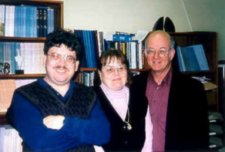 had been blessed with an instructor with a passion for parapsychology, started a parapsychology club as an undergraduate that included a reading program, joined the Society for Psychical Research early on and both used the SPR library and attended SPR meetings, or if they were those the rare birds who had developed a serious passion of their own for all things parapsychological, then they had probably achieved basic literacy in the field’s published works. But many of them had come into the field in the “normal” way, by getting interested in parapsychology as one more option among many in psychology. These folk dove only into that subset of the recent literature germane to their own research areas. As for the rest, well, they weren’t interested. (Above is a picture of Carlos S. Alvarado, me, and Professor Bob Morris in Bob’s office at the KPU taken by Gunther Fleck of the Austrian Society for Psychical Research.) had been blessed with an instructor with a passion for parapsychology, started a parapsychology club as an undergraduate that included a reading program, joined the Society for Psychical Research early on and both used the SPR library and attended SPR meetings, or if they were those the rare birds who had developed a serious passion of their own for all things parapsychological, then they had probably achieved basic literacy in the field’s published works. But many of them had come into the field in the “normal” way, by getting interested in parapsychology as one more option among many in psychology. These folk dove only into that subset of the recent literature germane to their own research areas. As for the rest, well, they weren’t interested. (Above is a picture of Carlos S. Alvarado, me, and Professor Bob Morris in Bob’s office at the KPU taken by Gunther Fleck of the Austrian Society for Psychical Research.)
I believe it’s a mistake to set aside our shared heritage as immaterial. The truth is the well-read among us can tell who is ignorant of “the classics” and who isn’t. A lack of basic literacy in psychical research and parapsychology is very apparent in the way in which the disinterested use (or abuse) accepted standards of methodology, and the subtlety (or not) of how they interpret their data. And students and young researchers aren’t the only ones who suffer from this disconnect: we have a number of active, published researchers in the field who are likewise without a clue, methodologically and theoretically naïve, doomed to repeat the mistakes of the past, doomed to reinvent the wheel. There are even some supposedly seasoned researchers who brag about their refusal to read our “classics.” How shortsighted! Not having mastered the “classics” is not something to boast about. On the contrary, it’s a terrible shame. But, thankfully, it’s a shame that can be completely obliterated by spending some intellectually satisfying days and nights curled up under a tree or in a big easy chair with a print book or journal, or wrapped around one’s laptop or PDA scrolling through an e-book or the contents of an on-line library. All you have to do is read! So what are the works that I believe pave the road to basic literacy in psychical research and parapsychology? First let me say that when I talk about “classics” I’m defining the term in its widest sense. What I’m really emphasizing here is what a person needs to read in order to have a well-rounded background in the field. Some of the titles are “true” classics in that they are both important to researchers today and represent a particular point in our history. Some are not strictly classics mainly because they are too recent to know whether or not they will be as important to the next several generations of researchers as the “true” classics are to us. So I have a list that intermingles true classics with titles I’m nominating as future classics. In any case, the books I’m recommending fall into three categories: history of the field and its institutions; surveys of the breadth and depth of the field; and specific classics reporting research or drawing research together to synthesize a theory. The content of the list is somewhat different for me now than it was in the 1970s and 1980s as the world has changed since I started out. And, of course, I know that setting up a “canon” of classics is a negotiated thing in any field: I’m well aware that my everybody-should-read-this list is bound to differ from somebody else’s. Also, I have to apologize to the wonderfully well-read folk in the field who are fluent in many more languages than I am. The list I have compiled here is limited to materials published in English. Those who are multi-lingual will have a wider — and no doubt more interesting — list than mine. Finally I realize I have listed mainly books here while others might include different types of publications. For example, they might compile something like our topic bibliographies, or our links to on-line articles and abstracts, or our lists of links to on-line sources about individuals and areas of research. So without further fanfare here is the list that I think will re-awaken old research ideas and inspire new ones, deepen and broaden the quality of your work, and give you a stronger sense of your own place in the “genealogy” of our field: 1. Inglis, B. (1977). Natural and Supernatural: A History of the Paranormal from Earliest Times to 1914. London: Hodder and Stoughton. (Rev. Ed., Dorset: Prism, 1992). 2. Inglis, B. (1984). Science and Parascience: A History of the Paranormal, 1914-1939. London: Hodder and Stoughton. 3. Gauld, A. (1968). The Founders of Psychical Research. London: Routledge & Kegan Paul. 4. Mauskopf, S. H., & McVaugh, M. R. (1980). The Elusive Science: Origins of Experimental Psychical Research. Baltimore: Johns Hopkins University Press. 5. Beloff, J. (1993). Parapsychology: A Concise History. London: Athlone Press. Comments on The Histories I’ve included the Inglis books because they give the reader a sense of how long the experiences that underly our field have been reported, that is, they drive home the point that seemingly psychic experiences have “existed” since the beginning of human history. Modern researchers, especially those who do experimental work, often lose sight of the phenomena we are actually studying. It’s sort of a natural history argument, like something you might tell an ornithologist who has spent so much time studying the aerodynamics of the wing of a finch, that he has forgotten that he started out by marveling at the breathtaking beauty of wild birds in flight. There is also a scientific tale in sweeping histories of this sort, because by pondering what Croesus thought he was doing when he put the Oracle at Delphi to the test, or what Pliny the Elder was thinking when he published what sound to us like out-of-body experiences in his Natural History, or how Prospero Lambertini understood the methods he was developing to guide the Vatican in its early investigations of what seemed to be miracles, well, then you appreciate the fact that our field has a long history in the intelligent urge to grasp the workings of the world.  Moving to books like Alan Gauld’s Founders and Mauskopf and McVaugh’s Elusive Science give you a glimpse into the history of efforts to establish systematic scientific research in the field in two related but significantly different contexts. Gauld’s context is personal, philosophical, but also lyrical, as he chronicles the origins of the Society for Psychical Research and the efforts of its founders to put the study of mediumship and reported seemingly psychic experiences on a scientific footing. Moving to books like Alan Gauld’s Founders and Mauskopf and McVaugh’s Elusive Science give you a glimpse into the history of efforts to establish systematic scientific research in the field in two related but significantly different contexts. Gauld’s context is personal, philosophical, but also lyrical, as he chronicles the origins of the Society for Psychical Research and the efforts of its founders to put the study of mediumship and reported seemingly psychic experiences on a scientific footing. 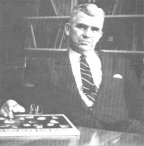 Mauskopf and McVaugh’s Elusive Science, on the other hand, draws a bridge from the story as it unfolded in London to the story as it unfolded in the United States, with an emphasis on the early work of J. B. Rhine. The style of Elusive Science is firmly entrenched in the detailed, contextual method of a history of science case study, based as it is on a decade of archival research and oral histories. But the personal and philosophical stories being told in that book are as sweeping and vibrant as those that are visible in Gauld’s Founders. (To the left above is the English philosopher Henry Sidgwick who was one of the “founders” of the Society for Psychical Research. To the right above is J. B. Rhine, often credited with founding American experimental parapsychology.) Mauskopf and McVaugh’s Elusive Science, on the other hand, draws a bridge from the story as it unfolded in London to the story as it unfolded in the United States, with an emphasis on the early work of J. B. Rhine. The style of Elusive Science is firmly entrenched in the detailed, contextual method of a history of science case study, based as it is on a decade of archival research and oral histories. But the personal and philosophical stories being told in that book are as sweeping and vibrant as those that are visible in Gauld’s Founders. (To the left above is the English philosopher Henry Sidgwick who was one of the “founders” of the Society for Psychical Research. To the right above is J. B. Rhine, often credited with founding American experimental parapsychology.)
John Beloff’s Concise History ties it all together, emphasizing those threads of our history that have led to modern research concerns, and capping that tale off with a brief listing of what was, in the early 1990s, present-day academic parapsychology. (There are some who say you ought to read Beloff first, and if you’re the kind of person who would rather get the overview before you dive into the details, by all means, start with Beloff.) 6. Murphy, G., with L. A. Dale (1979). Challenge of Psychical Research: A Primer of Parapsychology. Westport, CT: Greenwood Press. (First published 1961) 7. Wolman, B. B. et al. (Ed.). (1977). Handbook of Parapsychology. New York: Van Nostrand Reinhold. (Reprint, Jefferson City, NC: McFarland, 1986) 8. Edge, H. L., Morris, R. L., Palmer, J., & Rush, J. (1986). Foundations of Parapsychology: Exploring the Boundaries of Human Capability. Springfield, IL: Charles C Thomas. 9. Broughton, R. S. (1991). Parapsychology: The Controversial Science. New York: Ballantine Books. 10. Stokes, D. (1997). The Nature of Mind: Parapsychology and the Role of Consciousness in the Physical World. Jefferson City, NC: McFarland. 11. Radin, D. (1997). The Conscious Universe: The Scientific Truth of Psychic Phenomena. San Francisco: HarperEdge. 12. Irwin, H. J. (2004). Introduction to Parapsychology (4th ed.) Jefferson, NC: McFarland. Comments on The Surveys This group of books are surveys of the field, one of which is an anthology, one a multi-authored introductory text, one a single-authored introductory textbooks designed for a college audience, and four are introductions to the field meant for intelligent lay readers but used widely as textbooks as well. Each of these books endeavors to provide a comprehensive overview of the field, and each does it from a different perspective, marking a different point in the history of field, albeit in the case of the 4th edition of Harvey Irwin’s popular textbook, the very recent history.  The first of these, psychologist Gardner Murphy’s Challenge of Psychical Research, was originally published in 1961. Challenge presents a thoughtful, psychologically-informed overview of the field which includes a look at the Cross-Correspondences, a set of mediumistic communications gathered by the Society for Psychical Research in the early years of the 20th century. The first of these, psychologist Gardner Murphy’s Challenge of Psychical Research, was originally published in 1961. Challenge presents a thoughtful, psychologically-informed overview of the field which includes a look at the Cross-Correspondences, a set of mediumistic communications gathered by the Society for Psychical Research in the early years of the 20th century.  During Rhine’s time and after the death of William McDougall, Murphy was probably the most senior intellectual in the American branch of the field, and certainly appreciated the work that Rhine and his team were doing. But a number of us have speculated on what the shape of the modern field would have been had Gardner Murphy been its guiding force in America instead of J. B. Rhine. Murphy was a subtle thinker completely immersed in psychology proper who was not eager to set our field apart while J. B. Rhine lived a love/hate relationship with psychology, and threw himself into the development of parapsychology as a separate discipline. It’s an interesting contrast of styles and purposes to ponder. (Above left is a picture of Gardner Murphy and above right is William McDougall.) During Rhine’s time and after the death of William McDougall, Murphy was probably the most senior intellectual in the American branch of the field, and certainly appreciated the work that Rhine and his team were doing. But a number of us have speculated on what the shape of the modern field would have been had Gardner Murphy been its guiding force in America instead of J. B. Rhine. Murphy was a subtle thinker completely immersed in psychology proper who was not eager to set our field apart while J. B. Rhine lived a love/hate relationship with psychology, and threw himself into the development of parapsychology as a separate discipline. It’s an interesting contrast of styles and purposes to ponder. (Above left is a picture of Gardner Murphy and above right is William McDougall.)
The Handbook of Parapsychology was one title among many in a series of edited handbooks in psychology and psychiatry that Wolman coordinated, each one covering a different area. That a volume devoted to academic parapsychology should be included in such a series was a landmark in and of itself, but the content of the volume was then, and is now, extremely important as well. Not only did John Beloff, Gardner Murphy, J. Fraser Nicol and J. B. Rhine contribute historical chapters, but Jan Ehrenwald, Alan Gauld, Charles Honorton, Robert L. Morris, J. G. Pratt, J. B. and Louisa Rhine, William Roll, Rex Stanford, Ian Stevenson, and Robert van de Castle (among many others) contribute research-oriented chapters on their own areas. Noted author Arthur Koestler and Wolman himself also penned essays. Topics range from the history of the field to statistical and research methods, to parapsychology’s relationship to other fields, to theory. The third book in this section of the list was written as a introduction to the field to be used in undergraduate and graduate classrooms. That there were not many such classrooms at the time was, thankfully, not a deterrent to the publication of this book. Edge is a philosopher, Rush, a physicist and Morris and Palmer, both trained in psychology, experimental parapsychologists. The chapters survey all the basic research areas in the field at the time and deal with a variety of experimental and statistical methods. Founders is heavily illustrated as well.  The fourth, written by a senior researcher in the field who was then at the Institute for Parapsychology, stands in between the usual denseness of a college text, and the narrative style of a popular book. The result is a survey of the field at the time that is eminently readable but also well-footnoted and referenced and thus its wide use as a textbook while it was in print. (Used copies are still easily available out there and most public libraries have it as well.) To the sharp-eyed reader there are some subtle and important differences between Broughton’s (the author) take on the field and that of Edge, Morris, Palmer and Rush. This is always true from one title to the next, and the discovery of these differences and where you, as a researcher, stand in contrast to those you read is another benefit of working through these texts in chronological order. (The picture above is Richard Broughton.) The fourth, written by a senior researcher in the field who was then at the Institute for Parapsychology, stands in between the usual denseness of a college text, and the narrative style of a popular book. The result is a survey of the field at the time that is eminently readable but also well-footnoted and referenced and thus its wide use as a textbook while it was in print. (Used copies are still easily available out there and most public libraries have it as well.) To the sharp-eyed reader there are some subtle and important differences between Broughton’s (the author) take on the field and that of Edge, Morris, Palmer and Rush. This is always true from one title to the next, and the discovery of these differences and where you, as a researcher, stand in contrast to those you read is another benefit of working through these texts in chronological order. (The picture above is Richard Broughton.)
The fifth, by mathematician Douglas Stokes, pulls together a balanced evaluation of the scientific literature of the field and examines it in light of ideas about the nature of mind drawn from philosophy and physics. Stokes’ review has both a theoretical and an empirical depth that makes it as important to experienced researchers as it is to students of the field.  The sixth, by the prolific and creative researcher Dean Radin, gathers together the meta-analyses of experimental research and makes a strong case for the reality of the underlying phenomena that is rhetorically well-crafted both in terms of the readability of the text and in the clear graphical representations of the field’s findings. One chapter I personally found very useful was Radin’s “Field Guide to Skepticism,” a must-read section for those who are facing hostile and uninformed critics (unfortunately, the most common kind). (Dean Radin has his own website as well. You can get there by clicking here). The sixth, by the prolific and creative researcher Dean Radin, gathers together the meta-analyses of experimental research and makes a strong case for the reality of the underlying phenomena that is rhetorically well-crafted both in terms of the readability of the text and in the clear graphical representations of the field’s findings. One chapter I personally found very useful was Radin’s “Field Guide to Skepticism,” a must-read section for those who are facing hostile and uninformed critics (unfortunately, the most common kind). (Dean Radin has his own website as well. You can get there by clicking here).
The last of this section of the list, Harvey Irwin’s Introduction, surveys the field as a whole but emphasizes the role of experience both as a generator of the subject matter we study, and as a way to temporarily set aside the paranormality issue and explore the psychological context out of which experiences are reported. To that end, Irwin focuses on the phenomenology of, and psychological correlates connected with, both experience and belief, charting a somewhat different way forward in the methodological sense. Each of these books contain bibliography that can move the student or researcher more deeply into the literature of the field. But in and of themselves, they both communicate the specifics of scientific progress made at various moments in the history of parapsychology, and provide a strong sense of how the present Zeitgeist has come into being. 13. Gurney, E., Myers, F. W. H., & Podmore, F. (1886). Phantasms of the Living. London: Trubner. (Abridged edition: New York : Arno Press, 1975) 14. Sidgwick, H., Johnson, A., Myers, F. W. H., et al. (1894) Report on the census of hallucinations. Proceedings of the Society for Psychical Research, 10, 25-422. 15. Myers, F. W. H. (1903). Human Personality and Its Survival after Bodily Death. (2 vols.) London: Longmans Green. (Reprint of abridged edition: Charlottesville, VA: Hampton Roads, 2001) 16. Sinclair, U. (1930). Mental Radio. New York: A & C Boni. (Reprint, Charlottesville, VA: Hampton Roads, 2001) 17. Rhine, J. B. (1934). Extra-sensory Perception. Boston: Bruce Humphries. (Reprint: Boston: Bruce Humphries, 1964) 18. Pratt, J. G., Rhine, J.B., Smith, B. M., Stuart, C. E., & Greenwood, J. A. (1940). Extrasensory Perception after Sixty Years. Boston: Bruce Humphries. (Reprint: Boston, Bruce Humphries, 1967) 19. Tyrrell, G. N. M. (1953). Apparitions. London: Duckworth. (Reprint, bound with Science and Psychical Phenomena. New Hyde Park, N.Y., University Books, 1961) 20. Stevenson, I. (1966). Twenty Cases Suggestive of Reincarnation. Proceedings of the American Society for Psychical Research. (New revised edition: Charlottesville, VA: University Press of Virginia, 1974) 21. Stevenson, I. (1970). Telepathic Impressions: A Review and Report of Thirty-Five New Cases. Charlottesville, VA: University of Virginia Press. 22. Ullman, M., Krippner, S., & Vaughan, A. (1973). Dream Telepathy. New York: Macmillan. (Third edition: Charlottesville, VA: Hampton Roads, 2003] 23. LeShan, L. (1973). The Medium, the Mystic and the Physicist: Towards a General Theory of the Paranormal New York: Viking Press. [Reprint: New York: Helios Press, 2003] 24. Targ, R., & Puthoff, H. E. (1977). Mind Reach: Scientists Look at Psychic Ability. New York: Delacourte. 25. Gauld, A., & Cornell, A. D. (1979). Poltergeists. Boston: Routledge & Kegan Paul. 26. Braude, S. E. (1979). ESP and Psychokinesis: A Philosophical Examination. Philadelphia: Temple University Press. 27. Tart, C. T., Puthoff, H. E., & Targ, R. (1979). Mind at Large: Institute of Electrical and Electronic Engineers Symposia on the Nature of Extrasensory Perception. New York: Praeger. 28. Rhine, L. E. (1981). The Invisible Picture: A Study of Psychic Experiences. Jefferson City, NC: McFarland. 29. Robinson, D. (1981). To Stretch a Plank: A Survey of Psychokinesis. Chicago: Nelson-Hall. 30. Gauld, A. (1982). Mediumship and Survival: A Century of Investigations. London: Heinemann. 31. Braude, S. E. (1986). The Limits of Influence: Psychokinesis and the Philosophy of Science. New York: Routledge & Kegan Paul. 32. Jahn, R. G., & Dunne, B. J. (1987). Margins of Reality: The Role of Consciousness in the Physical World. San Diego: Harcourt Brace Jovanovich. 33. Cardeña, Etzel, Lynn, Stephen J., & Krippner, Stanley (2000). Varieties of Anomalous Experience: Examining the Scientific Evidence. Washington, DC: American Psychological Association. 34. Rao, K. R. (Ed.) (2001). Basic Research in Parapsychology (2nd Ed.) Jefferson City, NC: McFarland. 35. Braud, W. (2003). Distant Mental Influence: Its Contributions to Science, Healing and Human Interactions Charlottesville, VA: Hampton Roads. 36. Braude, S. E. (2003). Immortal Remains: The Evidence for Life After Death. Lanham, MD: Rowman & Littlefield. Comments on Research Studies and Overviews of Research Areas Arranged chronologically, the consumer of this section of the list wanders back and forth between spontaneous case investigation, séance room phenomena, experimental parapsychology, philosophical treatments of our main concepts, and over-arching theories. In all cases but one I have given the reference to an original publication, which in two cases is the publication of the material as a proceedings of the Society for Psychical Research or the American Society for Psychical Research. I also referenced only the second edition of Rao’s compilation because it is significantly expanded from the first edition. 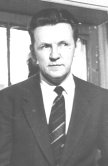 The works here that deal with experimental research include Rhine’s first monograph, Extra-Sensory Perception (ESP), that was published in 1934. Not only is this the book that inspired a whole generation of scientists to take up parapsychology — among them, eminent psychologist and parapsychologist Dr. Gertrude Schmeidler — but it is the text that started a very specific storm of controversy that played out in mainstream academic and scientific journals and in national newspapers and magazines in the United States. The controversy culminated — well, to some extent — in the volume, Extrasensory Perception after Sixty Years (ESP60) published in 1940 by the Duke Parapsychology Laboratory team. Not only does the reader get swept away in the enthusiasm of the early days of experimental parapsychology in ESP, but one also gets a very clear picture of the problems with Rhine’s theory and methodology. Moving to ESP60 gives the reader a sense of how productive the rounds of criticism and response were in terms of methodological and theoretical refinement. It also inoculates one against modern reiterations of long-out-of-date criticisms that today’s uninformed skeptics regularly dredge up from the past. Rao’s (2001) compilation of the “classics” among experimental research reports provides a good companion to both of these books by bringing the reader well into modern laboratory-based psi research. (The picture at the left above is the psychologist and parapsychologist J. Gaither Pratt who came to Rhine’s laboratory as a student in the very early 1930s and headed up the team that wrote ESP60 in the spring of 1939.) The works here that deal with experimental research include Rhine’s first monograph, Extra-Sensory Perception (ESP), that was published in 1934. Not only is this the book that inspired a whole generation of scientists to take up parapsychology — among them, eminent psychologist and parapsychologist Dr. Gertrude Schmeidler — but it is the text that started a very specific storm of controversy that played out in mainstream academic and scientific journals and in national newspapers and magazines in the United States. The controversy culminated — well, to some extent — in the volume, Extrasensory Perception after Sixty Years (ESP60) published in 1940 by the Duke Parapsychology Laboratory team. Not only does the reader get swept away in the enthusiasm of the early days of experimental parapsychology in ESP, but one also gets a very clear picture of the problems with Rhine’s theory and methodology. Moving to ESP60 gives the reader a sense of how productive the rounds of criticism and response were in terms of methodological and theoretical refinement. It also inoculates one against modern reiterations of long-out-of-date criticisms that today’s uninformed skeptics regularly dredge up from the past. Rao’s (2001) compilation of the “classics” among experimental research reports provides a good companion to both of these books by bringing the reader well into modern laboratory-based psi research. (The picture at the left above is the psychologist and parapsychologist J. Gaither Pratt who came to Rhine’s laboratory as a student in the very early 1930s and headed up the team that wrote ESP60 in the spring of 1939.)
 Mental Radio (Sinclair, 1930), Dream Telepathy (Ullman, Krippner & Vaughan, 1973), and Mind Reach (Targ & Puthoff, 1977) highlight efforts to develop experimental tests that more closely mirror the kinds of experiences that underly the field as a whole. Mental Radio is different from the rest of the titles because it is the work of an interested (but informed) amateur who was endeavoring to test the putative psi abilities of his wife. It’s fairly systematic, though, and represents well the research of those experimenters in the field whose methodology was similar to Sinclair’s. For this reason it’s included. (The picture above to the left is psychologist and parapsychologist Dr. Stanley Krippner when he worked at the Parapsychology Foundation’s laboratory which was in operation in the 1960s.) Mental Radio (Sinclair, 1930), Dream Telepathy (Ullman, Krippner & Vaughan, 1973), and Mind Reach (Targ & Puthoff, 1977) highlight efforts to develop experimental tests that more closely mirror the kinds of experiences that underly the field as a whole. Mental Radio is different from the rest of the titles because it is the work of an interested (but informed) amateur who was endeavoring to test the putative psi abilities of his wife. It’s fairly systematic, though, and represents well the research of those experimenters in the field whose methodology was similar to Sinclair’s. For this reason it’s included. (The picture above to the left is psychologist and parapsychologist Dr. Stanley Krippner when he worked at the Parapsychology Foundation’s laboratory which was in operation in the 1960s.)
Mind at Large (Tart, Puthoff & Targ, 1977) also provides a primary glimpse at various forms of experimental work that fed into what has become a productive and important area of modern research. (For a description of remote viewing and other “free response” experiments in parapsychology, click here.)  Equally, Braud’s recent (2003) Distant Mental Influence reviews another type of research that is very active now, illustrating how the experimental and empirical examination of the possibility of distant, possibly PK-based, influence on living systems grew out of earlier research that was, for some, conceived of as a methodological analog to the reported phenomena of psychic healing. (For a definition of this type of research click here.) Equally, Braud’s recent (2003) Distant Mental Influence reviews another type of research that is very active now, illustrating how the experimental and empirical examination of the possibility of distant, possibly PK-based, influence on living systems grew out of earlier research that was, for some, conceived of as a methodological analog to the reported phenomena of psychic healing. (For a definition of this type of research click here.)
In the tradition of dealing with seemingly psychic experiences both as experiences and as evidence, Phantasms of the Living (Gurney et al., 1886) and “The Census of Hallucinations” (Sidgwick et al. 1894), 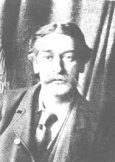 are true classics, not only because they present a variety of experiences that are potentially evidential, but also because they clearly define the starting point of the methodological lineage that stresses deep investigation into the veridicality of the experiences reported. There is a consciousness in both compilations of the phenomenological and psychological variables of the phenomena frequently discussed in more modern case collections. In fact, very little has been thought of in modern-day spontaneous case research that does not have its origins in Phantasms and “Census.” Stevenson’s Twenty Cases (1966) and Telepathic Impressions (1970) very closely and effectively follow the methodological tradition established by these titles, and Twenty Cases was, of course, the start of an exceptionally productive life’s work investigating cases of claimed reincarnation in children that produced a long list of important publications. (The picture above right is Edmund Gurney of the SPR.) are true classics, not only because they present a variety of experiences that are potentially evidential, but also because they clearly define the starting point of the methodological lineage that stresses deep investigation into the veridicality of the experiences reported. There is a consciousness in both compilations of the phenomenological and psychological variables of the phenomena frequently discussed in more modern case collections. In fact, very little has been thought of in modern-day spontaneous case research that does not have its origins in Phantasms and “Census.” Stevenson’s Twenty Cases (1966) and Telepathic Impressions (1970) very closely and effectively follow the methodological tradition established by these titles, and Twenty Cases was, of course, the start of an exceptionally productive life’s work investigating cases of claimed reincarnation in children that produced a long list of important publications. (The picture above right is Edmund Gurney of the SPR.)
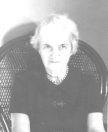 L. E. Rhine’s (1981) Invisible Picture, on the other hand, charts a different methodological course, analyzing a large number of uninvestigated cases for consistent patterns in the data. Those who have read through the surveys of the field in the previous section will have gotten a glimpse into this methodological argument, one which is still being debated. But reading the materials that provide examples of both these approaches gives one a much better sense of the relative advantages and disadvantages of each. (The picture above left is Louisa E. Rhine.) L. E. Rhine’s (1981) Invisible Picture, on the other hand, charts a different methodological course, analyzing a large number of uninvestigated cases for consistent patterns in the data. Those who have read through the surveys of the field in the previous section will have gotten a glimpse into this methodological argument, one which is still being debated. But reading the materials that provide examples of both these approaches gives one a much better sense of the relative advantages and disadvantages of each. (The picture above left is Louisa E. Rhine.)
Robinson’s (1981) To Stretch a Plank surveys psychokinesis as a concept through a discussion of spontaneous cases, séance room phenomena, psychic photography and laboratory studies that seem to provide evidence for what J. B. Rhine used to call “mind over matter.” In addition theories and implications are also reviewed. 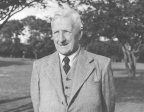 Two particularly comprehensive treatments of cases and of various types of survival research are Gauld and Cornell’s (1979) Poltergeists and Gauld’s (1982) Mediumship and Survival. In a sense these classics are “bridge titles” in this section of the list because they lead into the books recommended here which use, more or less closely, the evidence of the various methodologies extant in the field to build a cohesive philosophical picture of the phenomena. Among those of this type that stay close to the phenomena, either experiential or experimental or both, are: Tyrrell’s (1953) Apparitions which works through cases, digests and interprets explanatory models that preceded him, trying to make psychological sense of the phenomenology available; and Braude’s (1986) ESP and Psychokinesis, (1986) Limits of Influence, and (2003) Immortal Remains which mine the findings of the field for philosophical gold, discarding veins of logical Fool’s Gold while unearthing and refining the real thing. (The picture above is British psychical researcher, G. N. M. Tyrrell.) Two particularly comprehensive treatments of cases and of various types of survival research are Gauld and Cornell’s (1979) Poltergeists and Gauld’s (1982) Mediumship and Survival. In a sense these classics are “bridge titles” in this section of the list because they lead into the books recommended here which use, more or less closely, the evidence of the various methodologies extant in the field to build a cohesive philosophical picture of the phenomena. Among those of this type that stay close to the phenomena, either experiential or experimental or both, are: Tyrrell’s (1953) Apparitions which works through cases, digests and interprets explanatory models that preceded him, trying to make psychological sense of the phenomenology available; and Braude’s (1986) ESP and Psychokinesis, (1986) Limits of Influence, and (2003) Immortal Remains which mine the findings of the field for philosophical gold, discarding veins of logical Fool’s Gold while unearthing and refining the real thing. (The picture above is British psychical researcher, G. N. M. Tyrrell.)
 Wider theoretical statements include the ground-breaking Human Personality and Its Survival of Bodily Death (Myers, 1903) which ranges over a variety of human experience, setting up a broad psychological theory of the interrelationship of seemingly normal and paranormal phenomena. like all of Myers’ work, it’s a difficult read (and the prose in Personality is further complicated by the fact that Myers died before it was finished so it was prepared for publication by the SPR’s Richard Hodgson and Alice Johnson), working through this book more than pays for the time spent on it. LeShan’s (1973) Medium, the Mystic and the Physicist and Jahn and Dunne’s (1987) Margins of Reality are equally insightful for widely different reasons, and from very different historical and disciplinary perspectives. (The famous photo above right is F. W. H. Myers.) Wider theoretical statements include the ground-breaking Human Personality and Its Survival of Bodily Death (Myers, 1903) which ranges over a variety of human experience, setting up a broad psychological theory of the interrelationship of seemingly normal and paranormal phenomena. like all of Myers’ work, it’s a difficult read (and the prose in Personality is further complicated by the fact that Myers died before it was finished so it was prepared for publication by the SPR’s Richard Hodgson and Alice Johnson), working through this book more than pays for the time spent on it. LeShan’s (1973) Medium, the Mystic and the Physicist and Jahn and Dunne’s (1987) Margins of Reality are equally insightful for widely different reasons, and from very different historical and disciplinary perspectives. (The famous photo above right is F. W. H. Myers.)
Last but not least, the anthology edited by Cardeña, Lynn and Krippner marks a kind of watershed, because this book which surveys a wide variety of anomalous experiences usually subsumed under the heading of parapsychology — such as near-death experiences and out-of-body experiences — was published by the American Psychological Association (APA), an institution that has not been — shall we say — overly enthusiastic about parapsychology in the past. In any case, the reviews published within not only provide serious scholars of the anomalous with a substantive starting point, but include helpful bibliography that can point the research-minded reader to future, potentially fruitful avenues of investigation. There are folk in the field who stick to very narrow methodological or theoretical points of view and find the work of colleagues with different disciplinary identities and different philosophical leanings offensive. To my mind, that’s the most debilitating attitude a student of parapsychology can have. Of course, as the student/researcher reads their way through the literature of the field, they are going to find certain phenomena, methodologies, arguments, and theories more or less convincing. And it’s just human nature to characterize those with whom you agree as “clear-headed” and “insightful” without realizing what you really mean is “Yes, that’s what I think too”, or to say “That person is ignorant of the literature or is intellectually dishonest” when what you really mean is “I read that stuff too but I came to a totally different conclusion. I don’t want to believe that I’m wrong.” It’s important to get beyond that kind of simplistic sorting of your predecessors and colleagues into approved/disapproved categories. A true student of the field knows that it’s important to be able to read and take on the ideas of individuals who come to the work with a very different set of tools and proclivities than those with which you’ve been blessed. Different people can read the same material as you do and honestly and intelligently derive totally different meanings. Even if, ultimately, you don’t find the interpretations of those folks completely convincing, you need to be open to their value and usefulness to the field as a whole. And a respectful, subtle understanding of the methods and interpretations of work you don’t find convincing not only lets you determine how, why and to what extent you disagree, but may also open the door to a fruitful modification of your own point of view as you mull over and react to the thoughts of others. The best science is anti-dogmatic and self-correcting. The best science promotes intellectual diversity. It understands that there are widely different but equally productive ways to approach each field and its phenomena. It realizes that strong disputes over method and conclusions drive scientific progress. But science is a human endeavor and its “success” rises and falls not only on its practitioners’ levels of knowledge and skill, but on their generosity of spirit as well. Refusing to become conversant with anything other than a narrow area in the field is like sitting at the base of an old oak, too afraid to look up. Achieving basic literacy in the field, on the other hand, can get you climbing up that tree trunk to a vantage point from which you can look out over and appreciate the work of your predecessors and colleagues even while you figure out just exactly where you differ, and just exactly how you’re going to establish your own particular branch of parapsychology’s family tree. Happy reading! Nancy L. Zingrone
**************** Click here for the Current Blog. Previously Posted Blogs
**************** |
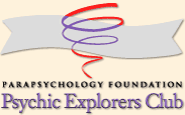 |

|
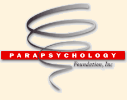 www. parapsychology. org |
||